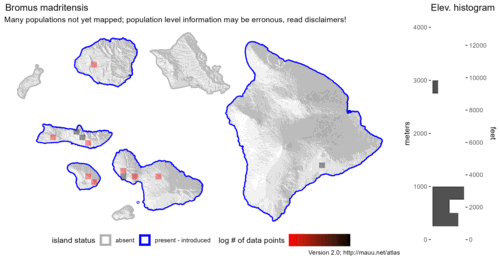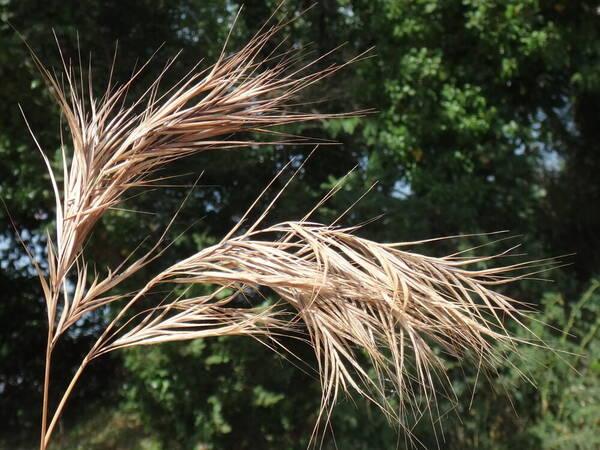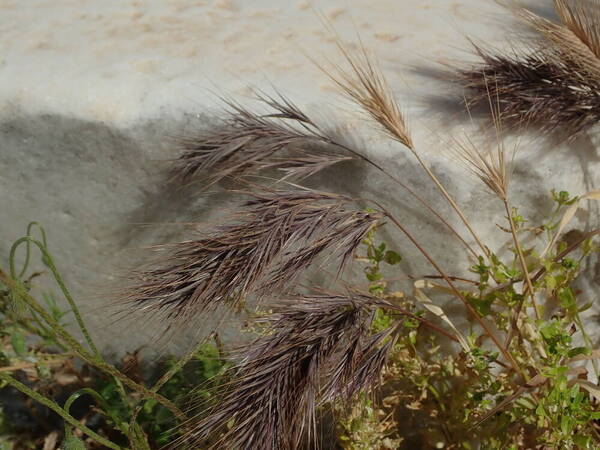Info
Subfamily: Pooideae
Genus etymology: Bromus = "food" [Greek] the ancient name for oats (Avena)
Species etymology: madritensis = from Madrid, Spain, although this is found across the entire Meditteraian region
Photosynthetic type: C3 (cool season)
Nativity: naturalized - accidental
First recorded in Hawaiʻi: 1903
Map

Inflorescence
 image credit: Christian_Berg
image credit: Christian_Berg image credit: Daniel_Cahen
image credit: Daniel_CahenDescription
Plants annual. Culms 34-70 cm, erect or ascending, glabrous or puberulent below the panicle. Sheaths densely short-pubescent or glabrous; auricles absent; ligules 1.5-2 mm, glabrous, obtuse, erose; blades 4-20 cm long, 1-5 mm wide, flat, both surfaces pubescent or glabrous. Panicles 3-15 cm long, 2-6 cm wide, open, erect; branches (at least some) 1-3+ cm, ascending to spreading, never drooping, usually visible, with 1 or 2 spikelets. Spikelets 30-50 mm, longer than the panicle branches, not densely crowded, with parallel sides or widening distally, moderately laterally compressed, with 6-10 florets. Glumes pilose, margins hyaline; lower glumes 5-10 mm, 1-veined; upper glumes 10-15 mm, 3-veined; lemmas 12-20 mm, linear-lanceolate, often arcuate, pubescent, with longer hairs near the margins, 5-7-veined, rounded over the midvein, margins hyaline, apices acuminate, teeth 1.5-3 mm; awns 12-23 mm, straight or arcuate, arising 1.5 mm or more below the lemma apices; anthers 0.5-1 mm. 2n = 28.
(Description source: Barkworth, M.E., Capels, K.M. & Long, S. (eds.) 1993. Flora of North America, north of Mexico. Volume 24. Magnoliophyta: Commelinidae (in part): Poaceae, Part 1. Oxford University Press, New York. 911 pp. http://floranorthamerica.org/Bromus_madritensis )